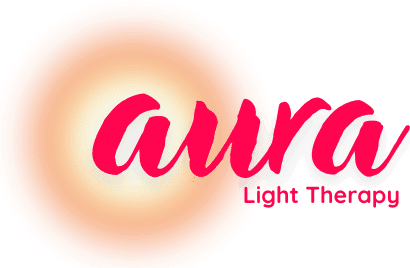
Lyme Disease

Lyme disease is an infection caused by the bacterium Borrelia burgdorferi.
It is a complex, multi-system illness often accompanied by fatigue, joint pain, brain fog, and neurological issues. While antibiotics are the standard treatment, many individuals experience persistent symptoms, a condition known as Post-Treatment Lyme Disease Syndrome (PTLDS). Emerging research suggests that Red Light Therapy (RLT), also known as photobiomodulation, may offer promising support for managing Lyme-related symptoms.
Reducing Inflammation:
Chronic inflammation is a hallmark of Lyme disease, contributing to joint pain, muscle aches, and fatigue. RLT works by delivering wavelengths of red and near-infrared light (typically between 600-1000 nm) that penetrate the skin and are absorbed by the mitochondria within cells. This absorption enhances the production of adenosine triphosphate (ATP), the cell’s energy source, while reducing pro-inflammatory cytokines like tumor necrosis factor-alpha (TNF-α) and interleukin-6 (IL-6). Research published by the National Institutes of Health (NIH) highlights how photobiomodulation reduces inflammation in various chronic conditions.
Boosting Cellular Repair and Regeneration:
Lyme disease often results in tissue damage, particularly in muscles, joints, and nerves. RLT supports cellular repair by stimulating fibroblast production, essential for collagen synthesis and tissue regeneration. A study referenced by the National Center for Biotechnology Information (NCBI) demonstrated that red light therapy enhances wound healing and promotes muscle recovery. This cellular rejuvenation can aid Lyme patients in recovering from muscle fatigue and joint discomfort.
Supporting Nerve Health:
Neurological symptoms like nerve pain, tingling, and brain fog are common in chronic Lyme cases. RLT has shown potential in promoting nerve repair by encouraging nerve cell regeneration and reducing oxidative stress, which can damage neurons. A study published by the NIH noted that near-infrared light therapy improved peripheral nerve regeneration and functional recovery in animal models.
Improving Brain Fog and Sleep Quality:
Many Lyme patients struggle with cognitive dysfunction, commonly referred to as brain fog. RLT supports brain health by increasing cerebral blood flow and oxygenation, enhancing cognitive clarity and focus. Additionally, red light exposure influences melatonin production, promoting more restful sleep — crucial for recovery. The Centers for Disease Control and Prevention (CDC) acknowledges sleep disturbances as a major factor in chronic illnesses, and improving sleep can significantly aid symptom management.
Modulating Immune Function:
Lyme disease can dysregulate the immune system, leading to persistent infections or autoimmune-like responses. Photobiomodulation has been shown to balance immune activity by promoting anti-inflammatory cytokines while supporting macrophage activity, the body’s natural pathogen cleanup cells. According to research published in Frontiers in Immunology, red light therapy can improve immune responses without overstimulating the system.
Final Thoughts:
While RLT is not a standalone cure for Lyme disease, it holds significant potential as a complementary therapy to ease chronic symptoms, support tissue repair, and improve overall well-being. With growing scientific backing from sources like NIH and CDC, more healthcare practitioners are exploring photobiomodulation as part of an integrative approach to managing complex, chronic conditions like Lyme disease.
For those struggling with Lyme, Red Light Therapy may provide a safe, non-invasive way to enhance healing at the cellular level, offering relief from pain, fatigue, and neurological discomfort when traditional treatments fall short.
"Lyme is an extremely complex disease that can often present with autoimmune-like characteristics. After having been diagnosed with Lyme Disease many years ago and grappling with its symptoms, I found that seeing a trained specialist in Lyme has been crucial to my recovery. I am grateful for the combination of naturopathic medicine and the usage of Red Light Therapy which have enabled me to feel like myself again." -Jackie
Click here to take our assessment and see if Red Light Therapy can help you to manage your Lyme Disease symptoms.
Questions?
Contact Us
Give us a call
(860) 751-9453
